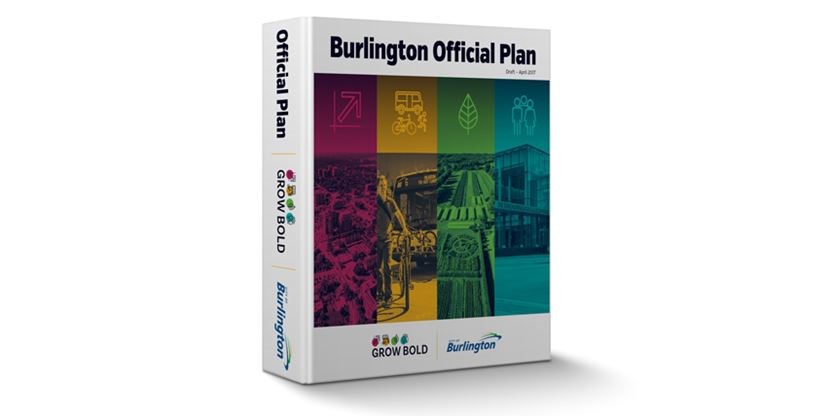City of Burlington’s Official Plan Not Status Quo
The meeting to recommend the Official Plan adoption has been moved to April 24, 2018 at 1:30 & 6:30 pm.
Get all the details: https://www.burlington.ca/en/services-for-you/Get-Involved—New-Official-Plan.asp
Over the past six years the City of Burlington has been working on a new official plan. What started as a refresh turned into a complete review of the Official Plan. The new OP will identify the land uses for the entire city, recognizing growth and requirements of residential, commercial, employment uses and demographic changes over the next 20-30 years.
While some folks may not want Burlington to change, unfortunately status quo is not an option as change in the way of density has been mandated by the Province. The identified growth is essential to us keeping our community sustainable and affordable as the growth will allow us to maintain our existing infrastructure. This is needed because our urban sprawl requires a huge amount of infrastructure to support it. Think of it this way, if 10 people pay for a road that costs $10,000, then they each pay $1000 for the road. But if we add another 10 people, now 20 people will pay for the road and although there maybe more wear on the road with more people using it, the cost of the road might be $600 per person instead of $1000. In the past we have relied on development charges from Greenfield developments and we now have very little Greenfield left to develop. We therefore need to generate income to support our existing infrastructure and in order to do this we must increase the number of taxpayers. The solution is simply more people and jobs per hectare. This is one of the objectives of the proposed official plan.
The new OP proposes growth mainly in two areas, the first is the Downtown and the second is around the mobility hubs (the GO stations). This is intended to be slow targeted growth over the next 50 years.
The work that has been completed to date that supports the current final draft of the OP has occurred through Council workshops and meetings, stakeholder and community engagement with over 180,000 people weighing in. The community engagement sessions are still occurring. It has been a substantial and complicated process, and it’s a privilege to provide my voice on behalf of residents.
The new OP respects and protects our existing neighborhoods. Our Ward Six community of Headon Forest, Alton, Millcroft and the rural area won’t change.
The rural and agriculture policies in the new OP have been expanded to identify and allow new uses in order to protect and support agriculture. Our rural community asked for these changes and I support them as they will help ensure agriculture is sustainable into the future.
So if our existing residential communities are not changing how can this mandated growth occur? This has been the major discussion point of our OP. The first area identified was the Urban Growth centre of the Downtown which had been recommended by previous councils and approved by the Province and imbedded in our policies since 2004.
In discussions with the Region the body that approves our OP, they have indicated they do not have the ability to change this long term view, but it could be reviewed in 2027. In my view if we don’t continue supporting and growing the downtown it will simply die and we will end up with a downtown with empty stores and million dollar condos. The first sign of this happening was when we almost lost Central School. The school is still at risk, and losing it would cause families to relocate, causing significant impacts to the downtown. Our role moving forward will be to ensure there are affordable family units through our housing policies in the downtown, services such as groceries stores and growth that will support businesses and economic development.
The other area of identified growth is the Mobility Hubs around the GO Train Stations. This too makes sense as people commute back and forth. The secret to success will be establishing a walk able, vibrant and connected community that addresses transportation needs.
This brings me to my next point. Once the OP is approved the real work begins. Up to now there have been 40 reports which have informed our decisions. The next step after the OP is approved is to develop policy within a number of plans that will further identify and define the goals of the OP. For instance, how will we address the increased traffic because of this growth? The answer is that once the land use has been established through the OP a Transportation Master Plan will be finalized to address the new transportation challenges. Another example is the Secondary plan. The OP document is a high level document that uses blobs on a map to indicate what might be possible. The Secondary plan looks more deeply into each situation and identifies restrictions such as a watercourse or protected land or sensitive non compatible uses that will restrict development. So in other words the work is just beginning, as new plans will inform the policies of the OP and there will be continued public consultation on these plans.
Remember these things take time. The Berkeley for example that is currently being built on the Lakeshore was approved over 20 years ago.
The new proposed OP more accurately defines height and density as well as where it should be located. Our current official plan identifies height as a minimum requirement vs. a maximum definition with justification. This was the case with the building development application across from City Hall for 24 stories. Our OP simply had no teeth in which we could refute the development. Based on the legislated process that we must follow, we can’t not approve something because we don’t like it. We must support our decisions with good planning, the OP informs our planning decisions.
The latest Ontario Municipal Board decision on Martha St. is another indicator of an outdated OP. While it was unanimously refused by Council because of the height The OMB ruling speaks to the very justification of why we need to get the OP finished as soon as possible.
“The Board’s decision reflected the fact that the Board feels strongly that the current OP designation is not appropriate for the site, and is not reflective of provincial expectations for transit supportive density in a Urban Growth Centre.”
The majority of staff and Council have been voicing the opinion for some time, that the City’s planning policies for a good part of the downtown are outdated, and not consistent with provincial policies.
It is also important to note that what is being proposed in the new OP is very conservative given what was recently approved by the OMB.
There also seems to be an immediate rush by developers to get some of the more controversial development applications into the City before the new OP is complete. They currently have a window of opportunity to ask for more height before the new OP is completed. This is all the more reason to get the OP done.
The majority of Council and our planning staff agree that we must get the new OP finished in order to protect what we have and ensure appropriate development is in place to support our future.
The majority of Council believes that the Downtown should be identified as an Urban Growth center, with the highest density in the upper precinct south of Fairview. Significant investments have been deliberately made in the Downtown such as the Performing Arts Center, the Pier and the new Joseph Brant Museum all to support the expected growth and economic development in this vision.
The Majority of Council agrees with the proposal of the mobility hubs concept plan. While further work will be required to define this plan we are well on our way and will have plenty of time to define this idea into the future. This will include sustainable development that will reduce our carbon footprint, green development that is efficient, walkable and transit oriented.
This all being said, different points of view have caused significant changes to the OP. There are many opinions especially from some of the residents who don’t want the Downtown to change. Looking into the future takes leadership and a willingness to make decisions that are good for the long term even though they may be disruptive today.
I believe the changes that are proposed in the new Official Plan will lead our City into a time of prosperity, sustainability and affordability while insuring our city will continue on its current healthy, vibrant and livable path.

